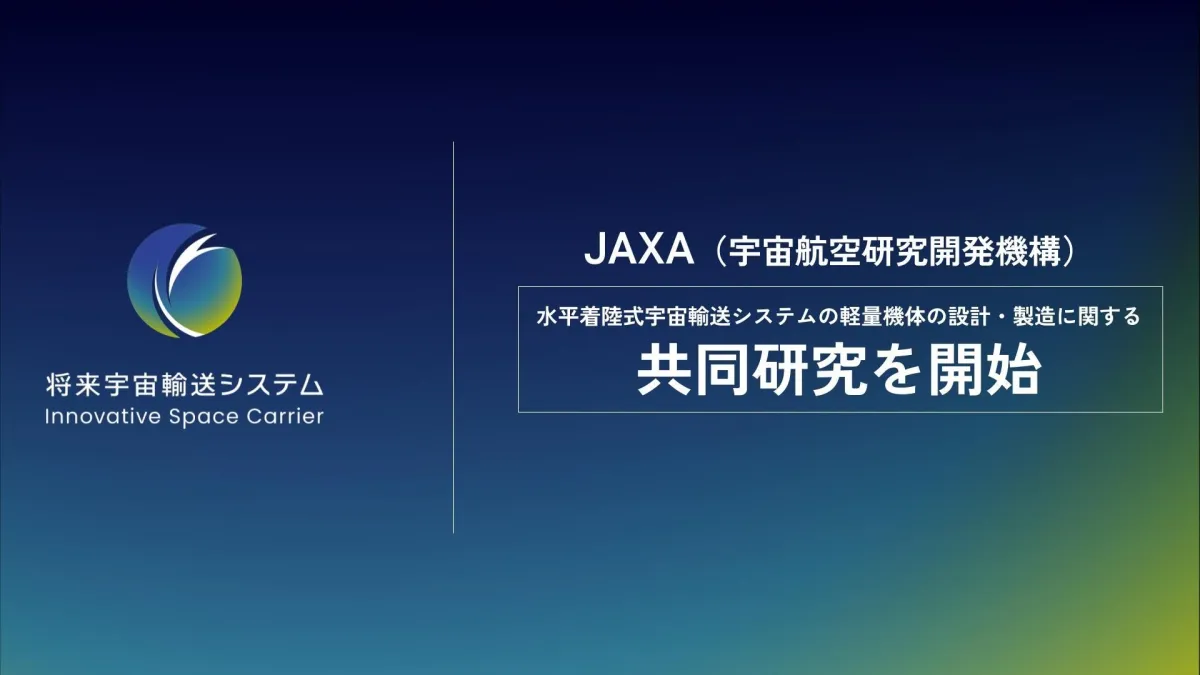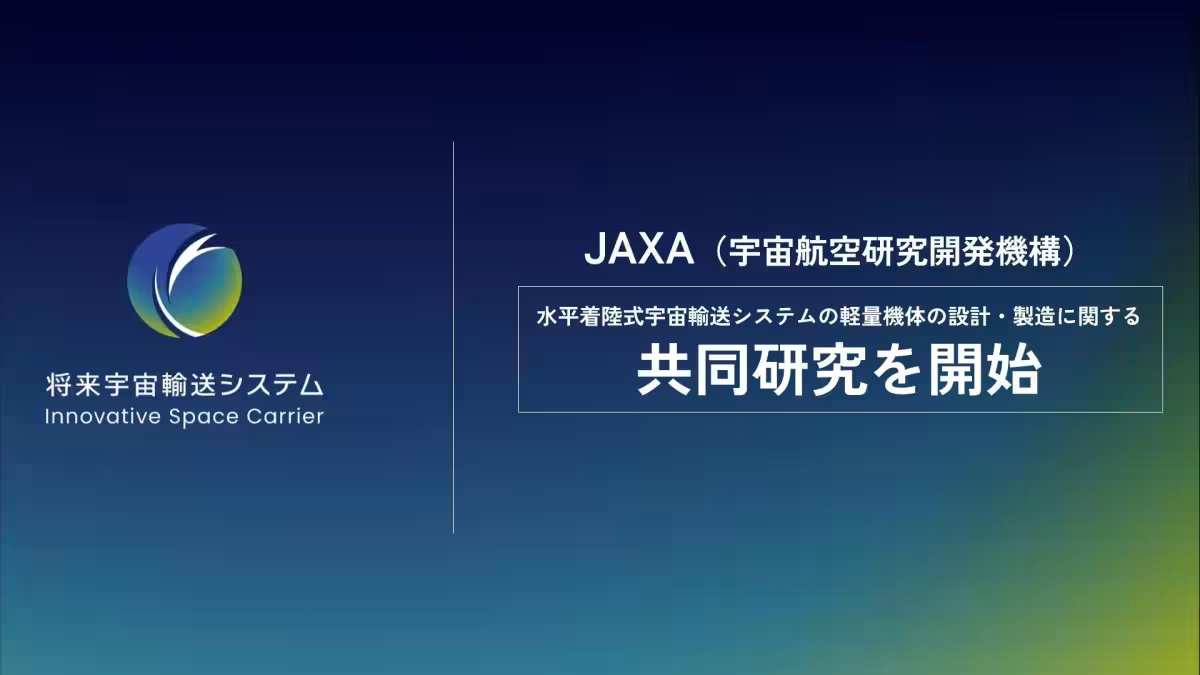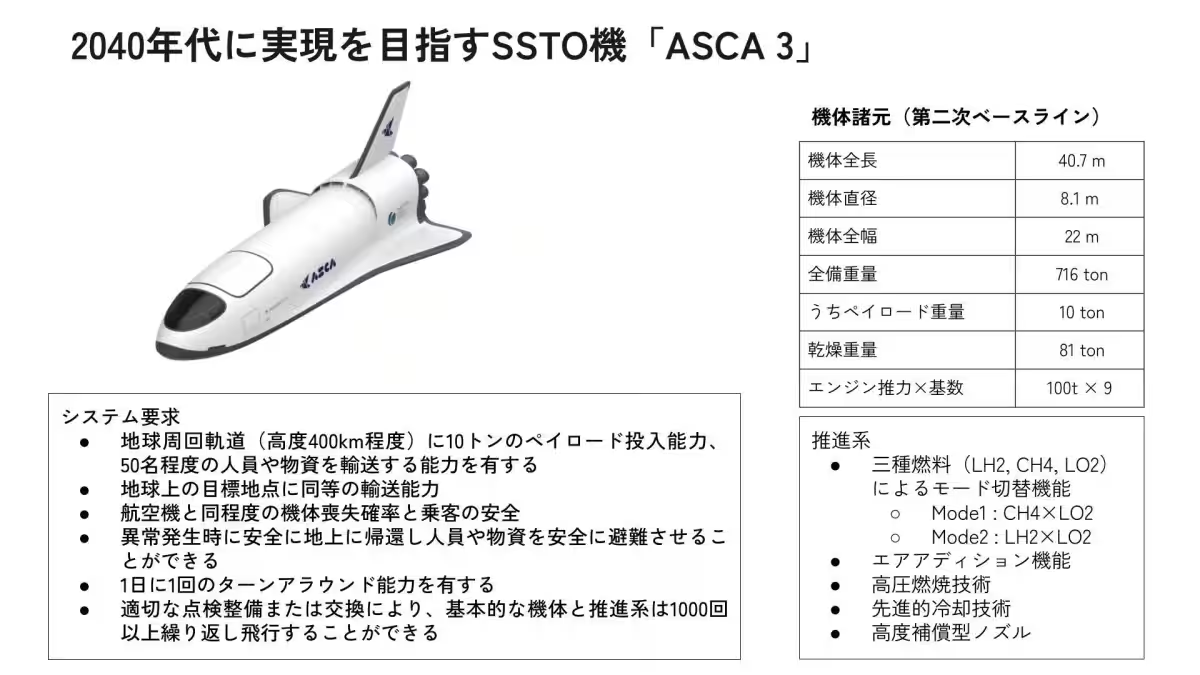

Innovative Space Carrier and JAXA Collaborate on Lightweight Spacecraft Design for Horizontal Landing
Innovative Space Carrier (ISC), headquartered in Chuo Ward, Tokyo, has embarked on a groundbreaking collaborative research project with the Japan Aerospace Exploration Agency (JAXA) focusing on the design and manufacturing of lightweight spacecraft for horizontal landing systems. This initiative is aligned with ISC's vision of creating a world where people and cargo can be delivered regularly to and from space, aiming to facilitate sustainable and efficient space transportation.
The concept of horizontal landing offers several operational advantages, particularly in terms of potential cost-effectiveness and maintenance simplicity over time. By enabling operations on conventional runways, horizontal landing systems present significant benefits for future space logistics. ISC believes this method stands as a leading option due to its overall efficiency and operational cost-effectiveness.
However, the advancement of such systems is met with various technical challenges, including increased thermal loads on the aircraft, greater weight from heat-resistant materials such as tiles, complexities in flight control, and the intricacies of maintaining structural integrity. To address these concerns, it is vital to focus on effectively balancing lightweight design with heat load reduction and advanced flight control systems.
The joint research initiative focuses on realizing ISC's envisioned horizontal landing spacecraft system. By leveraging JAXA's expertise in the analysis of winged spacecraft design, the collaboration aims to concretize technologies relevant to the design and production of lightweight vehicles.
Key aspects of the research include:
1. Conceptual design of a stable, lightweight aircraft silhouette.
2. Detailed design of lightweight structures, including rigorous weight evaluations.
3. Compilation of research findings to enhance future designs.
This collaboration is not the first between ISC and JAXA. Both entities have previously worked together on multiple projects aimed at advancing aerospace technology, underscoring their commitment to innovation in space transportation.
Looking ahead, ISC aims to develop a reusable spacecraft named ASCA 3 by the 2040s. This single-stage-to-orbit vehicle is intended to be capable of carrying payloads of up to 10 tons and accommodating around 50 passengers or equivalent cargo to low Earth orbit (LEO) at an altitude of approximately 400 km.
ASCA 3 Specifications Include:
ISC is actively seeking to enhance its workforce. The desire to journey into space is a dream we aim to fulfill through innovation and cross-industry collaboration. We invite professionals who are willing to commit themselves to work that matters and to be part of this exciting endeavor.
Interested parties can view our employment opportunities here. For business collaborations, please reach out through our contact page.
Additionally, we are accepting forward subscriptions for our space tourism offering. To register your interest, please follow this link.


The Promise of Horizontal Landing Systems
The concept of horizontal landing offers several operational advantages, particularly in terms of potential cost-effectiveness and maintenance simplicity over time. By enabling operations on conventional runways, horizontal landing systems present significant benefits for future space logistics. ISC believes this method stands as a leading option due to its overall efficiency and operational cost-effectiveness.
However, the advancement of such systems is met with various technical challenges, including increased thermal loads on the aircraft, greater weight from heat-resistant materials such as tiles, complexities in flight control, and the intricacies of maintaining structural integrity. To address these concerns, it is vital to focus on effectively balancing lightweight design with heat load reduction and advanced flight control systems.
Collaboration with JAXA: A Step Forward
The joint research initiative focuses on realizing ISC's envisioned horizontal landing spacecraft system. By leveraging JAXA's expertise in the analysis of winged spacecraft design, the collaboration aims to concretize technologies relevant to the design and production of lightweight vehicles.
Key aspects of the research include:
1. Conceptual design of a stable, lightweight aircraft silhouette.
2. Detailed design of lightweight structures, including rigorous weight evaluations.
3. Compilation of research findings to enhance future designs.
This collaboration is not the first between ISC and JAXA. Both entities have previously worked together on multiple projects aimed at advancing aerospace technology, underscoring their commitment to innovation in space transportation.
Future Goals: ASCA 3
Looking ahead, ISC aims to develop a reusable spacecraft named ASCA 3 by the 2040s. This single-stage-to-orbit vehicle is intended to be capable of carrying payloads of up to 10 tons and accommodating around 50 passengers or equivalent cargo to low Earth orbit (LEO) at an altitude of approximately 400 km.
ASCA 3 Specifications Include:
- - Payload Capacity: Up to 10 tons to 400 km high LEO.
- - Transport Capability: Can carry approximately 50 personnel or equivalent cargo.
- - Reliability: Targeting an aircraft-equivalent loss probability.
- - Safety Features: Includes functions for safe return during emergencies.
- - Operational Efficiency: Designed for a turnaround time of once daily.
- - Durability: Aiming for over 1,000 flights with prescriptive inspections and replacements.
Join Us in Our Mission
ISC is actively seeking to enhance its workforce. The desire to journey into space is a dream we aim to fulfill through innovation and cross-industry collaboration. We invite professionals who are willing to commit themselves to work that matters and to be part of this exciting endeavor.
Interested parties can view our employment opportunities here. For business collaborations, please reach out through our contact page.
Pre-registration for Space Travel
Additionally, we are accepting forward subscriptions for our space tourism offering. To register your interest, please follow this link.


Topics Entertainment & Media)










【About Using Articles】
You can freely use the title and article content by linking to the page where the article is posted.
※ Images cannot be used.
【About Links】
Links are free to use.